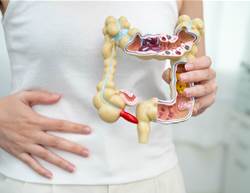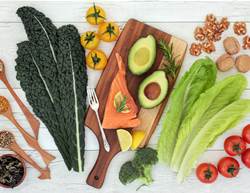It never hurts to know which foods can trigger heartburn, especially during menopause, when that uncomfortable burn often shows up more frequently.
As oestrogen and progesterone levels decline in menopause, the lower oesophageal sphincter (LES)—the muscle that normally acts as a gate to keep stomach acid down—can weaken. That makes it easier for acid to flow back up into the oesophagus or throat, says gastroenterologist Dr James J. Lee. Hormonal changes may also affect the oesophagus’ ability to move food efficiently, leaving it exposed to acid for longer. On top of that, heartburn can sometimes be a side effect of hormone replacement therapy, Dr Lee adds.
The good news: simple lifestyle shifts, including watching what you eat, can help keep symptoms in check.
Still, frequent heartburn or reflux should be assessed by a doctor. Gastroesophageal reflux disease (GORD)—where heartburn is the main symptom—can raise the risk of inflammation in the oesophagus and, in some cases, lead to precancerous changes in the lining, says gastroenterologist Dr Neha Mathur.
If your heartburn is only occasional, read on for the common food culprits and how to get relief.
What causes heartburn
Heartburn feels like a burning in the chest or throat when acid flows back from the stomach into the oesophagus, explains Dr Lee. It’s most likely after a heavy meal that relaxes or overwhelms the LES, allowing acid to escape.
Foods that may cause heartburn
Here, Dr Lee and dietitians share the foods most likely to set off symptoms and why. Keep in mind everyone’s triggers are different, so use this list as a guide rather than a rulebook.
If you’re unsure what foods are affecting you, try keeping a food and symptom journal to help spot patterns.
Tomato-based sauces or juice
Tomatoes are naturally acidic and that acidity can relax the LES muscle, letting stomach acids creep upward, says registered dietitian and nutritionist Vandana Sheth. Think about how often tomatoes sneak into your meals: pizza, salsa, pasta sauce and even ketchup can all set off symptoms.
Citrus
Citrus fruits like oranges, lemons and limes are another highly acidic culprit. A 2023 review linked them to a higher risk of GORD. Freshly squeezed juice may seem healthy, but for some, it comes with a side of reflux.
Spicy foods
That fiery curry or hot salsa might taste amazing, but the heat can irritate the oesophageal lining. Capsaicin—the compound that gives chilli peppers their burn—can also slow digestion, which puts more pressure on the stomach and makes reflux more likely.
Fatty, fried foods
Greasy foods like chips, fried chicken, creamy sauces and buttery pastries take longer to digest and lower pressure on the LES, says registered dietitian Giana DiMaria. The result: more acid exposure for your oesophagus.
Chocolate
Sorry, chocolate lovers—this sweet treat contains both caffeine and cacao, which can relax the LES and open the door to acid reflux. Researchers are still unpacking whether quantity plays a role, so one small square might be fine, but a few too many could leave you uncomfortable.
Carbonated beverages
That fizzy drink might feel refreshing, but bubbles can backfire. Carbonated beverages increase oesophageal acid exposure by relaxing the LES, says DiMaria. The carbon dioxide in soda or sparkling water also builds gas in the stomach, adding pressure that can push acid back up the oesophagus.
Peppermint
Peppermint tea is often touted for digestion, but it can work against you if reflux is a problem. “Peppermint relaxes the lower oesophageal sphincter, so it can cause reflux and heartburn,” DiMaria explains. Even something soothing can have a sting.
What’s the difference between GORD, heartburn and acid reflux?
Heartburn is the classic burning sensation in the chest or throat caused when stomach acid rises into the oesophagus, says Dr James Lee. Acid reflux is the broader term for that upward flow of acid—it doesn’t always feel like heartburn. It can also show up as chest discomfort, persistent coughing, hoarseness, a sore throat, or difficulty swallowing.
Important: Chest discomfort can also be a sign of a heart attack. If you suspect you’re having one, seek emergency medical help straight away.
GORD—short for gastro-oesophageal reflux disease—refers to ongoing, frequent reflux. If you notice symptoms at least twice a week for several weeks, you may be dealing with GORD. A doctor can guide you through treatment options, which may include lifestyle adjustments, dietary changes or other interventions.
How to ease and prevent heartburn
According to experts, these everyday strategies may help keep discomfort at bay.
Avoid potential trigger foods
Cutting back on foods that loosen the oesophageal valve—like tomatoes, citrus, fried foods, chocolate and fizzy drinks—can make a noticeable difference.
Eat smaller, more frequent meals
Large portions weigh heavily on the stomach, making reflux more likely. Lighter, more regular meals reduce that pressure, says dietitian Vandana Sheth.
Time your meals wisely
Give your body at least three hours to digest before heading to bed. If reflux tends to flare at night, Dr Lee suggests sleeping on your left side with pillows for support—this helps stomach acid stay put.
Practice gentle exercise after dinner
A short evening stroll not only helps digestion but also calms the nervous system, making it less likely that heartburn will keep you up.
Explore medical options with your doctor
Over-the-counter antacids or histamine blockers (such as Pepcid, Nexium or Prilosec) can help manage occasional symptoms, notes Dr Roshini Mathur. For persistent reflux, doctors may prescribe stronger treatments like proton pump inhibitors or in severe cases, consider surgery to repair hiatal hernias or tighten the lower oesophageal sphincter.
What is a GORD diet?
A GORD-friendly eating plan focuses on foods that soothe rather than spark reflux. Think non-citrus fruits, fibre-rich wholegrains, lean proteins, low-fat dairy and plenty of vegetables. By swapping out common triggers for gentler options, you may reduce heartburn episodes and give your oesophagus a much-needed break.
The bottom line
Spicy, acidic and fatty foods top the list of heartburn culprits—but they’re not the whole story. Small lifestyle tweaks, like portion control and meal timing, can be powerful allies, while a GORD-conscious diet helps calm flare-ups before they start. Chronic reflux isn’t something to shrug off; left untreated, it can damage the oesophagus and even raise long-term cancer risk. If heartburn is a frequent visitor, it’s worth talking to your doctor about a plan that combines smart nutrition, lifestyle shifts and—if needed—medical support.









